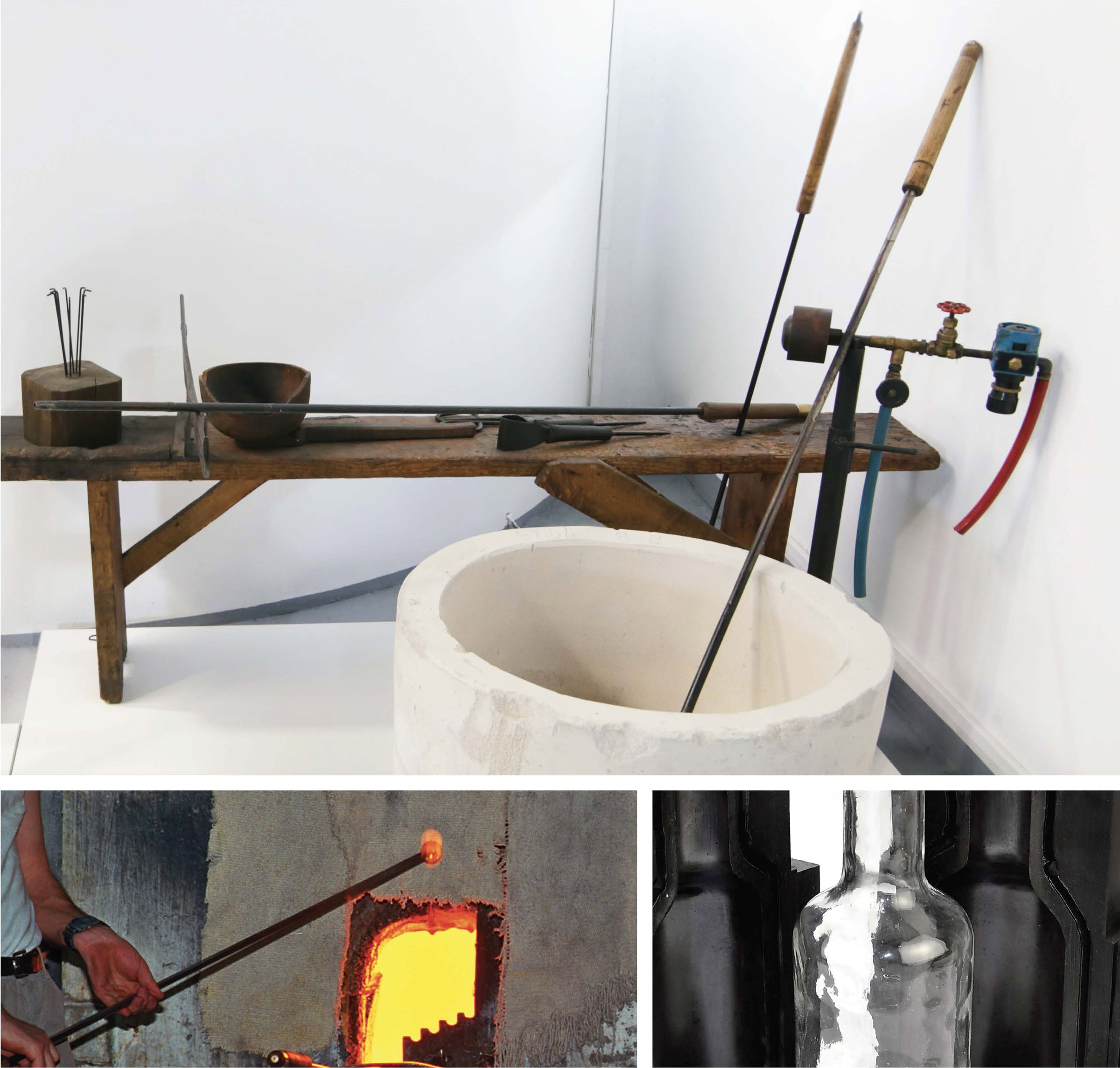Sand on Flame
Glassblowing tools
Manufacturer: Serbian Glass Factory
Place and time of production: Paraćin, SFRY, around 1980
Dimensions (cm): 174 . 85.4 . 48; 67 . 67 . 45; 10.3 . 11.5 . 1.6; 3.2 . 3.2 . 15.5; 18 . 18 . 28.8; 8 . 8 . 17
Inventory numbers: Т:79.3, Т:79.29; Т:79.19; Т:79.28; Т:79.18/1, Т:79.18/2
Glassblowing bench, glass smith’s pot, glass smith’s scissors, blowpipe with brass mouthpiece, mold for machine-blown glass with pattern
Glass production has been known since the Antiquity. The oldest surviving recipe was recorded on clay tiles of the Assyrian king Ashurbanipal (668–626 BC): “Take 60 pieces of sand, 180 pieces of algae and 5 pieces of chalk – and you will get glass”.
Manual glassblowing technique was developed in the 2nd century BC in Syria, where they used 100–150 m long metal blowpipes with a 1cm opening and a wooden mouthpiece. This technique remained more or less the same until modern times. From a pot located in a stove, the glassblower takes a mass of glass with a blowpipe, which he then shapes by blowing through the mouthpiece, while constantly rotating the blowpipe. The glassblower also uses other specialised tools for the production of the final product.
Manual glassblowing technique was developed in the 2nd century BC in Syria, where they used 100–150 m long metal blowpipes with a 1cm opening and a wooden mouthpiece. This technique remained more or less the same until modern times. From a pot located in a stove, the glassblower takes a mass of glass with a blowpipe, which he then shapes by blowing through the mouthpiece, while constantly rotating the blowpipe. The glassblower also uses other specialised tools for the production of the final product.
After the Second World War, the Factory became the largest glass manufacturer in former Yugoslavia. The increasing demand for glass packaging led to the introduction of new production technologies, which gradually supressed the traditional glassblowing techniques. Today, manual glassblowing technique is used for production of luxury and art objects, as well as for laboratory uses. Serbian Glass Factory Paraćin donated these tools to the Museum in 2015.




